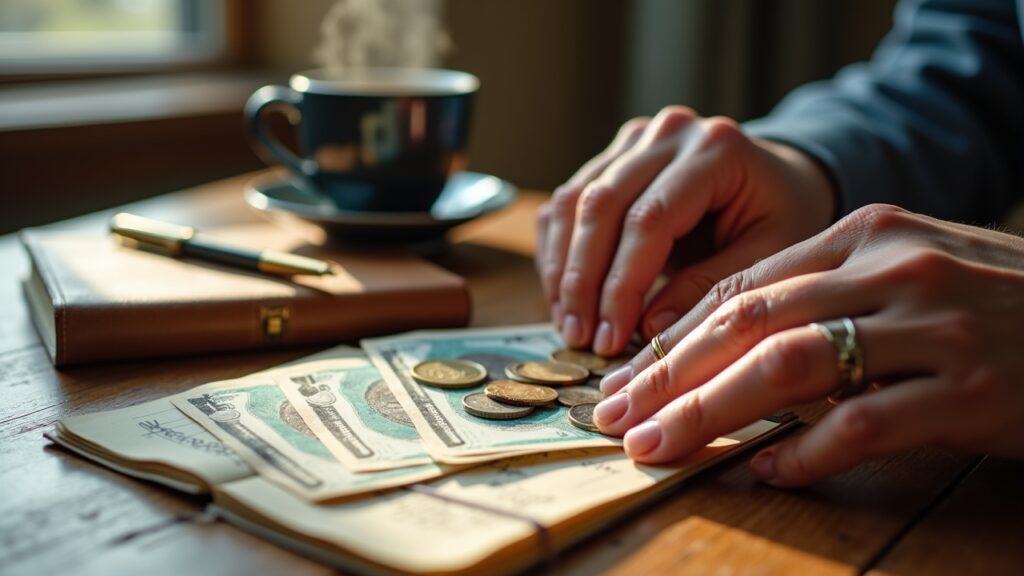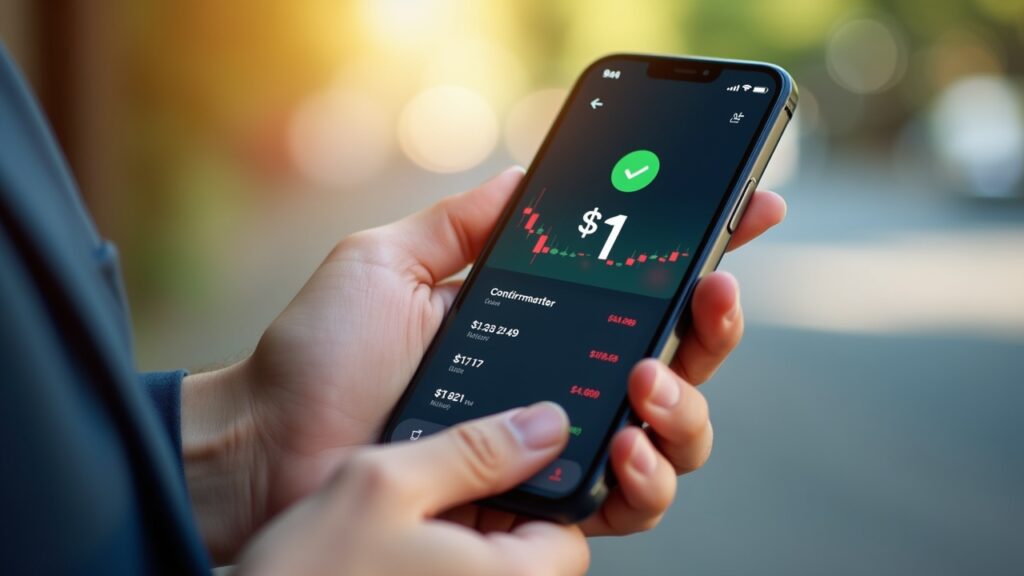Advertisements
Here’s a shocker – 61% of Americans don’t invest in the stock market because they think they need thousands of dollars to get started! Meanwhile, I started my investing journey with literally fifty bucks and a prayer. Actually, it was more like fifty bucks and a YouTube tutorial, but you get the idea.
Look, I remember sitting at my kitchen table, scrolling through investment apps and feeling completely overwhelmed. Every guru online seemed to be throwing around numbers like “$10,000 minimum” or “start with at least $5,000.” Yeah right! Most of us are just trying to figure out how to save anything after rent and groceries.
The truth is, you can start investing with way less money than you think. In fact, some apps let you begin with as little as $1. But before we dive into the nitty-gritty, let me share why getting started matters more than having the “perfect” amount saved up.
The Magic Number Nobody Talks About

So here’s what I learned the hard way – there isn’t actually a magic number. I know, I know, that’s not what you wanted to hear. But seriously, I wasted six months waiting to save up $1,000 because some blog told me that was the “right” amount to start investing.
Meanwhile, my friend Jake started with $25 on Acorns and was already learning the ropes. By the time I finally jumped in, he’d gained confidence and understood basic market movements. Me? I was still scared to press the “buy” button.
The real minimum you need depends on where you’re investing. Some brokerages like Fidelity or Charles Schwab have zero minimum requirements for basic accounts. Others might ask for $500 or $1,000, but honestly, those are becoming dinosaurs in today’s market.
My Embarrassing $50 Start (And Why It Was Perfect)
Okay, storytime. When I finally decided to start investing, I had exactly $50 in my “fun money” budget. I downloaded Robinhood (this was before all the controversy), bought a fraction of an Apple share, and felt like Gordon Gekko.
Then the stock dropped 3% the next day. I panicked, sold everything, and lost like $1.50. Yep, I was that person – the one who bought high and sold low on their very first trade!
But here’s the thing – that $50 mistake taught me more than any book could’ve. I learned about market volatility, the importance of patience, and why emotional investing is basically financial suicide. Best $1.50 I ever lost, honestly.
Where You Can Actually Start With Pocket Change
Alright, let’s get practical. Here are the places where you can literally start investing with your coffee money:
Micro-investing apps: Apps like Acorns or Stash let you start with $5. They round up your purchases and invest the spare change. Pretty neat, though the fees can eat into small accounts.
Commission-free brokers: Fidelity, Schwab, and E*TRADE all offer zero minimums and no trading fees for stocks. This is where I eventually moved my money.
Fractional shares: Can’t afford a whole Amazon share at $3,000+? No problem! Many brokers now let you buy fractions. I own 0.15 shares of Amazon, and I’m proud of it!
Robo-advisors: Betterment has no minimum, while others like Wealthfront need $500. They basically invest for you based on your goals.
The Sweet Spot Nobody Mentions
After making plenty of mistakes (like trying to day trade with $200 – spoiler alert: didn’t work), I’ve found that $100-$500 is actually the sweet spot for beginners. Here’s why this range rocks:
First off, it’s enough money that you’ll actually care about what happens to it. When I had just $50 invested, I’d check it obsessively but didn’t really learn much. With a few hundred bucks on the line, you start paying attention to real trends and company news.
Second, this amount lets you diversify a tiny bit. Instead of putting all your eggs in one Tesla-shaped basket (guilty!), you can spread it across 3-5 different investments. Maybe some index funds, a couple individual stocks, or even a bond ETF if you’re feeling fancy.
Building Your Investment Habit (The Part That Actually Matters)
Here’s something I wish someone had told me earlier – the amount you start with matters way less than consistently adding to it. I started with $50, but then I set up automatic transfers of $25 every week. Nothing life-changing, just what I used to spend on random Amazon purchases I didn’t need.
Before I knew it, I had $500 invested. Then $1,000. The habit became so automatic that I’d actually forgotten about it until I checked my account three months later. That’s when compound interest starts getting interesting!
Plus, this approach called “dollar-cost averaging” actually helps reduce risk. Sometimes you buy when prices are high, sometimes when they’re low. It all averages out, and you don’t have to stress about timing the market perfectly.
Your Next Move (Because Reading Isn’t Investing)

Look, I could sit here and tell you about P/E ratios and dividend yields all day. But the truth is, the best teacher is experience. Even if you start with just $20, you’ll learn more in your first month of actual investing than reading 100 articles.
Here’s my challenge to you: Open an investment account this week. Seriously, just do it. Transfer whatever you can comfortably afford to lose (because let’s be real, you might make some silly mistakes at first). Buy a simple index fund or a fractional share of a company you actually understand.
Remember, everyone started somewhere. Warren Buffett bought his first stock at 11 years old with money from selling gum door-to-door. You don’t need thousands to begin building wealth – you just need to begin. And hey, if you’re looking for more straight talk about money and investing, check out other posts on Plan Wealth. We keep it real around here, mistakes and all!




[…] to level up your financial game? Smart Start has plenty more resources to guide your investment journey. Check out our other posts on building wealth and making smart money […]